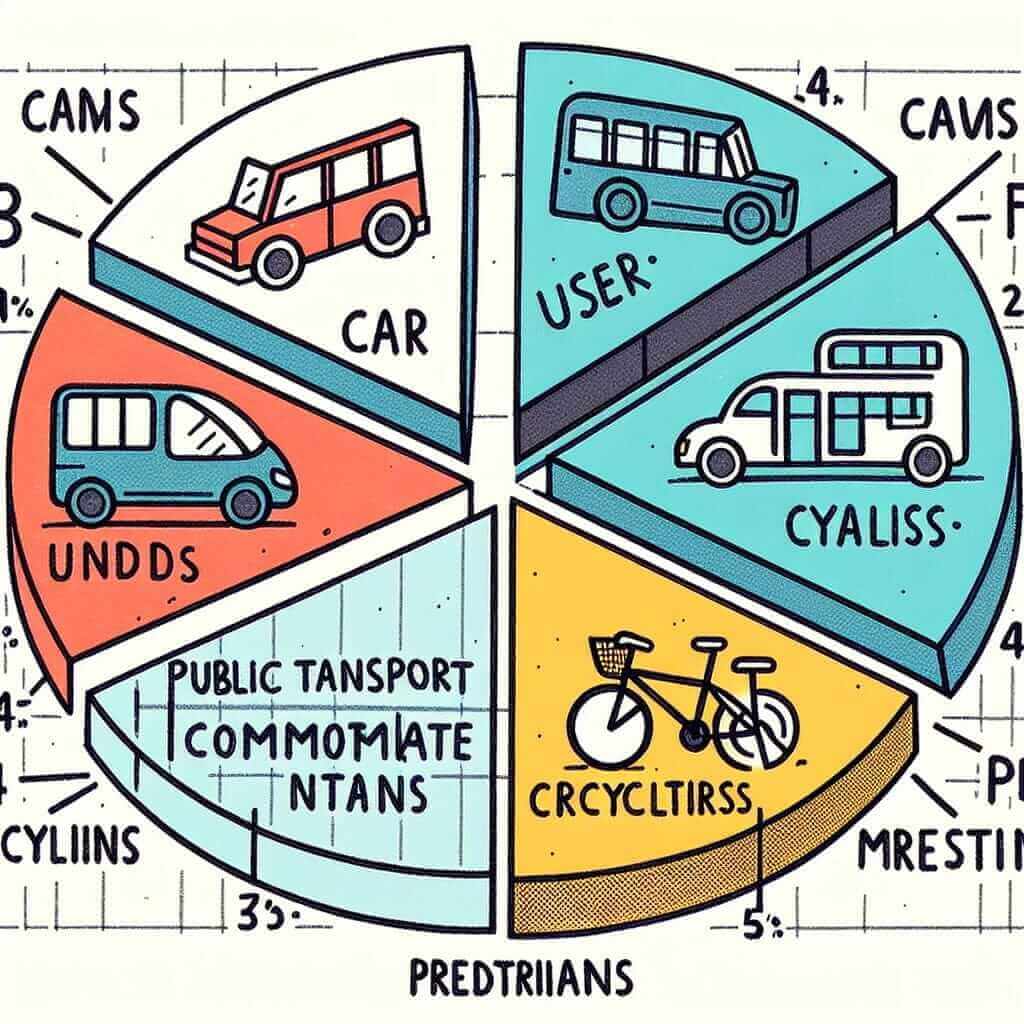In the IELTS Academic Writing Task 1, you’ll often encounter data presented in various visual formats, including pie charts. Describing a pie chart effectively is crucial to achieving a high band score. This guide will equip you with the necessary skills and strategies to confidently tackle pie chart descriptions in your IELTS exam.
Understanding Pie Charts in IELTS
Pie charts visually represent data as slices of a whole. Each slice corresponds to a specific category, and its size reflects the proportion or percentage it contributes to the total. Your task is to accurately and coherently describe these proportions and highlight key trends or patterns.
Describing Pie Charts Effectively
Follow this structured approach to ensure a clear and comprehensive description:
1. Introduction
- Begin with a concise introductory sentence that paraphrases the chart’s title and outlines the main categories presented.
- Example: “The pie chart illustrates the distribution of energy sources used for electricity generation in France in 2022.”
2. Overview
- Provide a general overview of the most significant trends or patterns. Focus on the largest and smallest segments and any noticeable differences between categories.
- Example: “Overall, nuclear power was the dominant source of electricity, accounting for over two-thirds of the total production. In contrast, renewable energy sources constituted a relatively small proportion.”
3. Detailed Analysis
- Describe each segment individually, starting with the largest and moving to the smallest.
- Use specific vocabulary to express proportions:
- Majority: “The majority of…”
- Minority: “A small minority…”
- Almost half: “Nearly half…”
- Roughly equal: “The proportions were roughly equal…”
- Use comparative and superlative adjectives to highlight differences:
- Significantly higher/lower: “…was significantly higher/lower than…”
- The most/least popular: “…was the most/least popular choice…”
4. Conclusion (Optional)
- A concluding sentence is not always necessary for pie chart descriptions. However, you may choose to summarize the key findings or highlight any significant overall trends.
Example Description from an IELTS Pie Chart
Let’s consider a pie chart depicting the preferred modes of transportation for commuting to work in London.
Pie Chart:
- Car: 45%
- Public Transportation: 30%
- Bicycle: 15%
- Walking: 10%

Sample Description:
“The pie chart illustrates the preferred modes of transportation for commuters traveling to work in London. It is evident that private vehicles are the most popular choice, with almost half of the commuters opting for cars (45%). Public transportation accounts for a significant proportion, constituting 30% of the total. Cycling and walking are less common, representing 15% and 10% respectively. In conclusion, while cars dominate commuting preferences, public transportation remains a significant mode of transport in London.”
Tips for Success
- Vocabulary: Utilize a wide range of vocabulary related to proportions, comparisons, and trends.
- Grammar: Pay close attention to subject-verb agreement, articles, and prepositions.
- Accuracy: Ensure your data interpretation is precise and consistent with the chart.
- Coherence and Cohesion: Use linking words and phrases to connect ideas smoothly.
- Time Management: Allocate sufficient time to analyze the chart and plan your response.
- Practice: Familiarize yourself with different pie chart examples and practice describing them effectively.
By following this comprehensive guide and practicing regularly, you’ll gain the confidence and skills needed to excel in describing pie charts in the IELTS Academic Writing Task 1. Remember, clarity, accuracy, and effective language use are key to achieving a high band score.